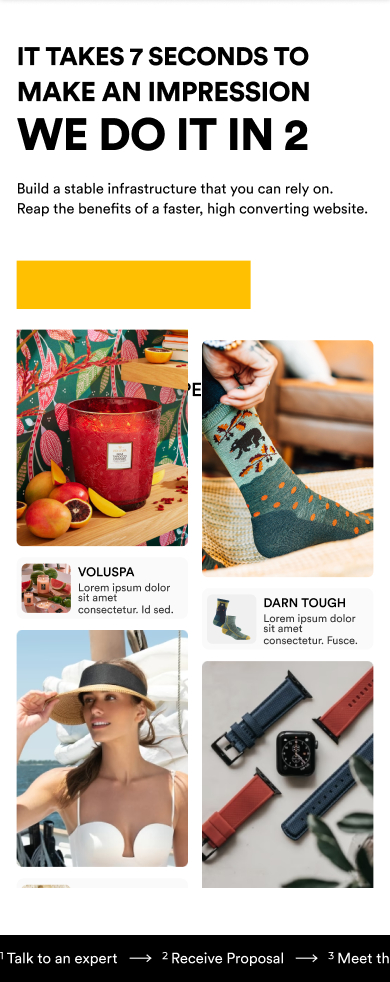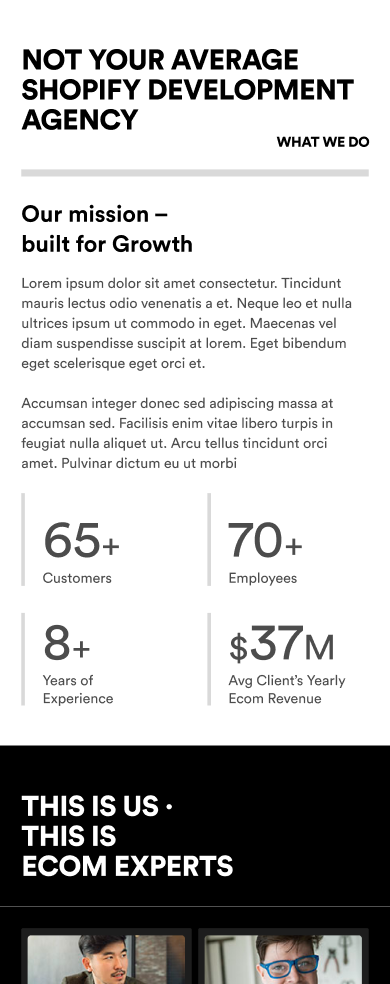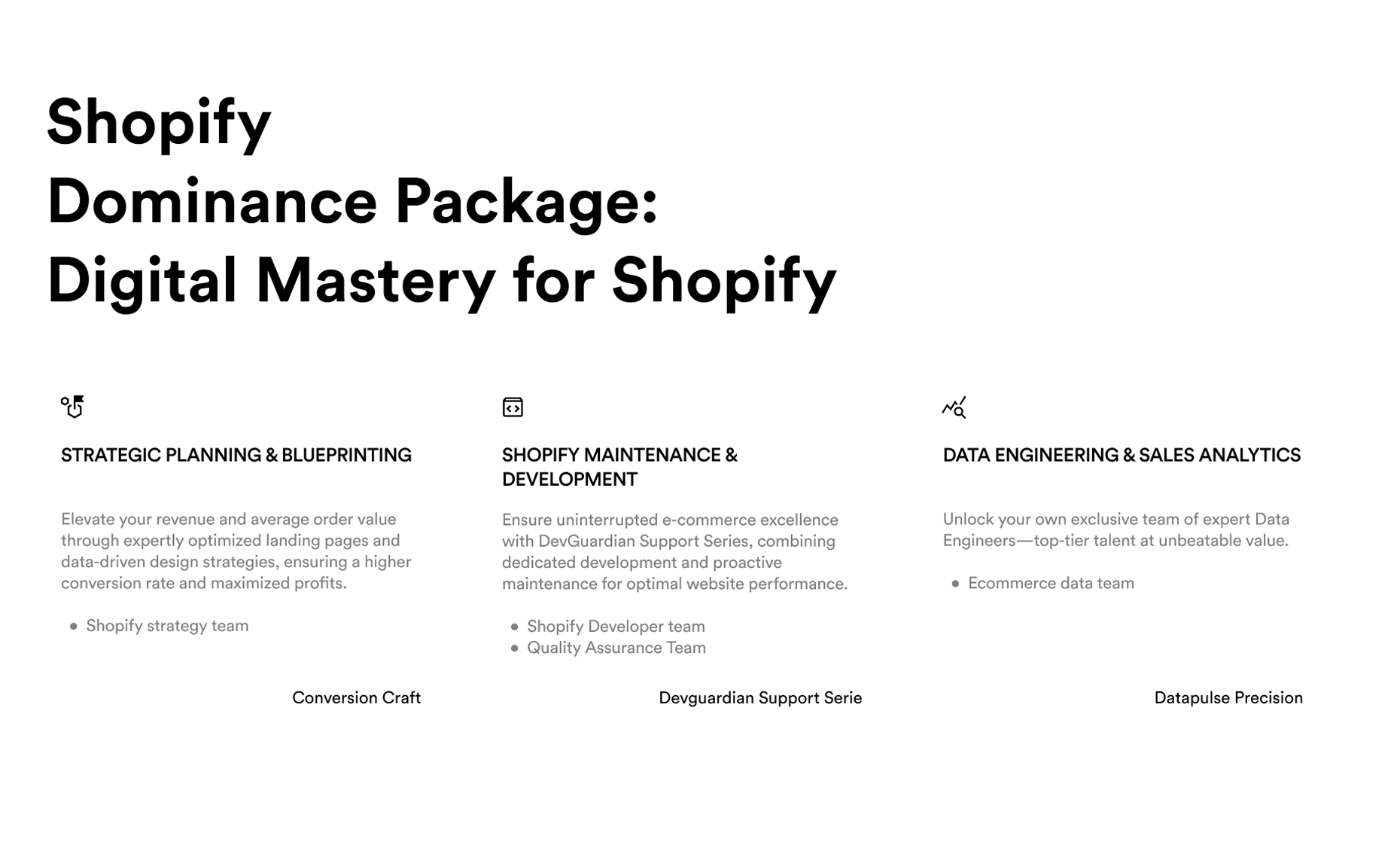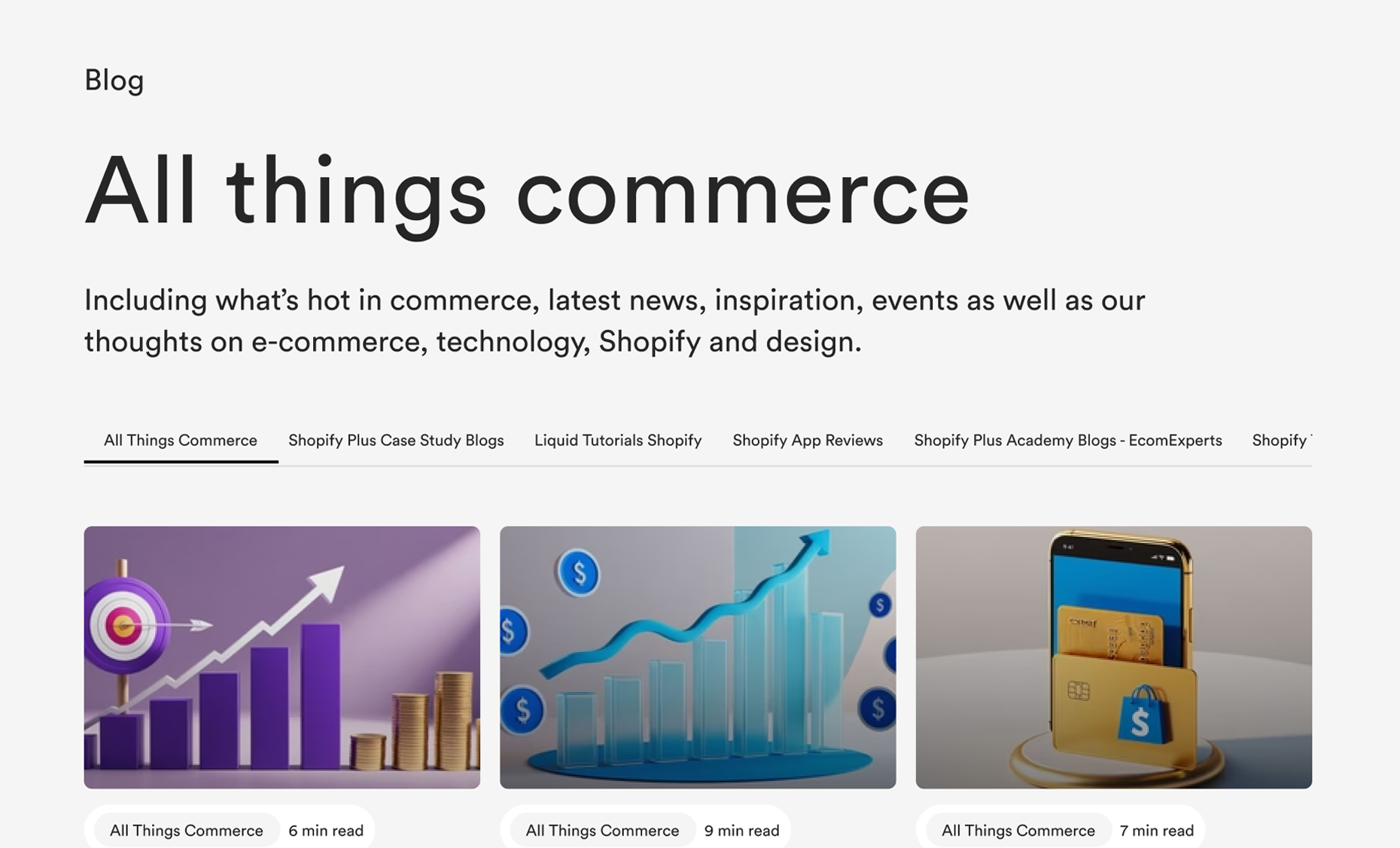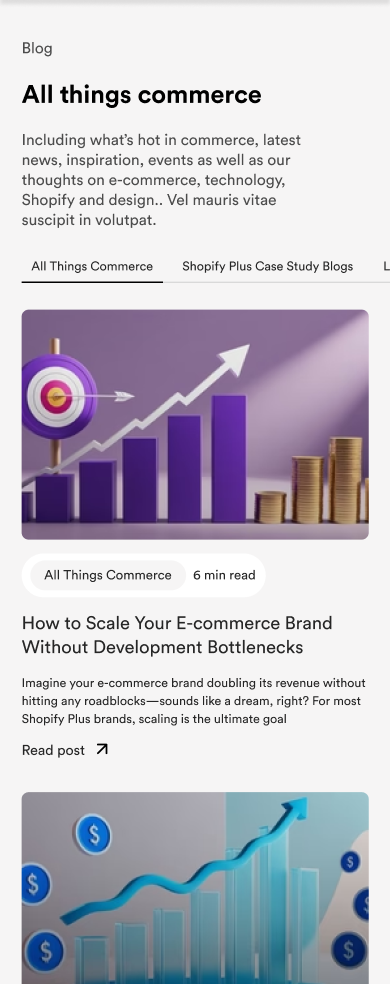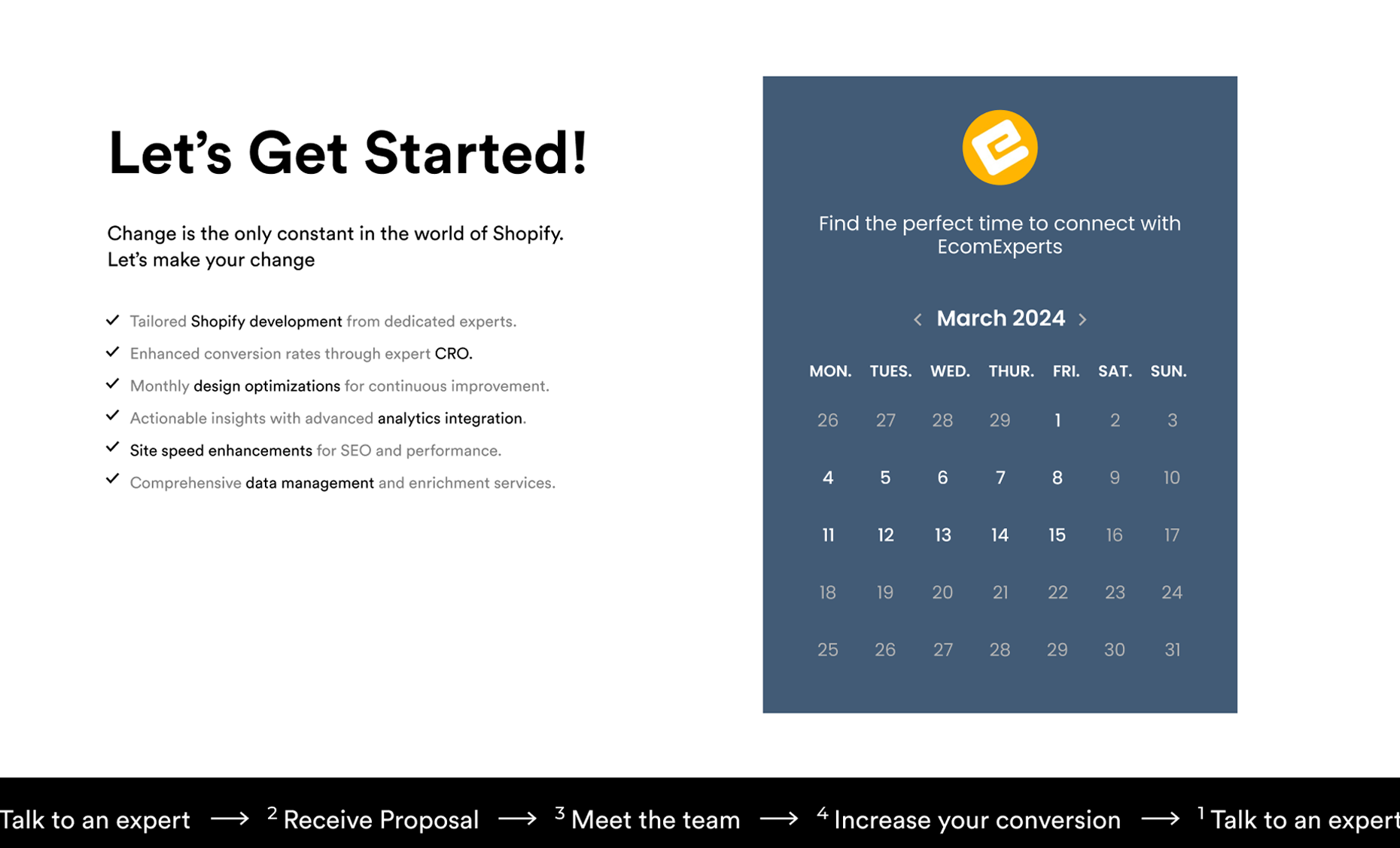If you’re running a growing Shopify store, you’ve probably heard that site speed matters. But how much does it really matter? Well, here’s a hard truth: slow load times are costing you customers—and by extension, revenue.
In fact, for every extra second your site takes to load, your conversion rates drop by around 7%. That's not something you can afford to ignore when your competitors are just a click away.
As a brand owner, you’ve got big ambitions. Whether you're aiming to scale your Shopify store or improve user experience, speed isn’t just a technical detail—it’s a strategic advantage. But figuring out speed optimization can feel overwhelming, especially when misinformation runs rampant.
You’ve likely heard it all: “Just compress your images, and you’re good,” or “Apps don’t slow down Shopify stores.” Here’s the kicker—most of those so-called “tips” are nothing more than myths. Following them won’t help your store load faster. In fact, they could be dragging your site down.
In this blog, we’re breaking down five of the most common Shopify speed optimization myths (the ones that sound logical but are actually costing you conversions). We’re going to lay out the facts, bust the myths, and give you actionable tips to get your store loading faster than ever.
Remember, improving your site speed isn’t just about keeping customers happy—it’s about improving your bottom line.
Myth 1: "Shopify Speed Scores Don’t Really Matter" (But They Absolutely Do)

There’s a common misconception floating around that Shopify speed scores are just vanity metrics. The truth? They’re far more critical than many store owners realize. Your store’s speed score impacts everything from SEO rankings to conversion rates, making it a powerful indicator of your store's overall health.
Why Your Speed Score Is More Than Just a Number
A low speed score is a sign that your store’s user experience might be suffering. Google uses speed as a ranking factor, meaning a slow store not only frustrates visitors but also struggles to rank high in search results. Worse, slow load times significantly impact sales.
Studies from 2024 show that bounce rates jump by 32% when load time increases from 1 to 3 seconds. This means that if your store is slow, customers are leaving before they even get a chance to browse or make a purchase.
How Shopify Calculates Your Speed Score

Your speed score is determined by several key performance metrics:
- First Contentful Paint (FCP): How quickly the first visible element loads.
- Largest Contentful Paint (LCP): How long it takes for the largest element, like an image or video, to fully load.
- Cumulative Layout Shift (CLS): Measures how much elements on your page move around while loading.
If your score is low, these elements need attention—whether it’s compressing images, optimizing code, or reducing app load times.
Why This Matters to You
For Shopify store owners, speed is an invisible sales driver. The faster your store loads, the better the user experience, leading to higher conversions and lower bounce rates. A low score indicates it’s time to make serious improvements, and not just for the sake of performance—it directly impacts your bottom line.
Myth 2: "All Shopify Themes Are Optimized for Speed" (Here’s Why That’s Not Always True)

One of the most common assumptions Shopify store owners make is that any theme available in the Shopify marketplace is automatically optimized for speed. After all, why would a theme slow down your store, right? Unfortunately, that’s not how it works.
Why Themes Can Slow Down Your Shopify Store
While many Shopify themes are designed to be visually appealing, they aren’t always built with performance in mind. A lot of themes, especially third-party or custom ones, come loaded with features, animations, and heavy code that can bog down your store’s performance.
If your theme is packed with unnecessary JavaScript, CSS files, or large image assets, it’s going to take longer for your store to load, leading to poor performance.
The Real Deal on Theme Optimization
Even if you’re using a popular theme, that doesn’t mean it’s optimized out of the box. You might need to trim unnecessary elements, such as:
- Extra features you don’t use (like embedded videos or carousels).
- Non-essential animations that look great but can kill your load time.
- Bloated code that slows down rendering, especially on mobile devices.
What You Can Do
Instead of relying on a theme’s default optimization, it’s essential to audit your store and make adjustments where necessary. Removing unused features, optimizing images, and deferring non-essential scripts are just a few ways to improve speed. Alternatively, having a Shopify developer customize or streamline the theme can make a huge difference.
Myth 3: "Speed Optimization Is Just About Reducing Image Sizes" (There’s More to It Than That)

It’s easy to fall into the trap of thinking that simply compressing your images will solve your Shopify store’s speed issues. While optimizing image sizes is critical for speeding up your site, it’s only one piece of a much larger puzzle.
The Full Picture of Speed Optimization
Image compression is important, but true speed optimization involves multiple factors, such as:
- Lazy Loading: This technique ensures that images and videos are only loaded when they enter the viewport, not all at once. This significantly reduces initial load times.
- Minimizing HTTP Requests: Every element on your page—scripts, stylesheets, images—requires a separate request to the server. The more requests, the slower your site. Combining files, using CSS sprites, and removing redundant elements can greatly reduce the number of requests and speed up loading times.
- Caching and Compression: Proper use of caching and gzip compression can further enhance load times by storing elements locally on the visitor's device, meaning they don’t have to be downloaded again on repeat visits.
Why You Shouldn’t Stop at Images
Focusing only on images ignores some of the most significant speed offenders, like poorly written code, unnecessary JavaScript, and too many HTTP requests. Without addressing these issues, your store’s performance will suffer, even if your images are perfectly compressed.
Myth 4: "Shopify Apps Don’t Affect Site Speed" (But They Really Do)

Many Shopify store owners believe that adding apps won’t impact their store’s performance. After all, they’re just plug-and-play, right? The reality is, every app you install adds extra code to your store, and poorly optimized apps can slow down your site significantly.
How Apps Can Hurt Your Site Speed
Each app typically includes its own JavaScript and CSS files, which can increase the number of server requests. The more apps you have, the more data your site needs to load, which can drag down performance—especially if the app isn’t coded efficiently.
It’s not just about quantity, either. Even a single, heavy app can drastically increase your page load time. Many store owners overlook this, believing that since Shopify apps are vetted by Shopify, they won’t cause issues. However, apps from third-party developers can be resource-heavy and introduce unnecessary bloat to your site.
How to Avoid App Bloat
You don’t have to go on an app uninstalling spree to improve performance, but a smart app audit can make a significant difference. Here’s how to approach it:
- App Audit: Review the apps you’re currently using and assess whether they’re essential. Disable or remove apps you no longer need.
- Code Cleanup: Some apps leave behind unused code even after they’re uninstalled. Ensure your store is clean of leftover scripts.
- Alternatives: Whenever possible, opt for lightweight apps or apps that combine multiple functions to reduce the number of installs.
Get Professional Help
App management is a balancing act. It’s important to keep functionality high without sacrificing speed. At EcomExperts, we specialize in optimizing Shopify stores by reviewing and refining the apps you use to ensure your site stays fast without losing valuable features.
Myth 5: "I Can Handle Speed Optimization Without a Developer" (It’s More Complicated Than You Think)

It’s tempting to think that you can DIY your Shopify speed optimization by following a few online guides. Sure, you might be able to handle basic fixes like image compression or app cleanups, but for deeper, more effective optimization, a professional touch is crucial.
Why DIY Solutions Often Fall Short
Basic fixes can only take you so far. Real speed optimization involves advanced techniques like:
- Code Minification: Removing unnecessary characters from code to streamline load times.
- Critical CSS: Identifying and loading essential CSS first while deferring non-critical CSS to improve page speed.
- Deferring JavaScript: Ensuring scripts load only when needed, avoiding unnecessary delays during page loading.
These tasks require technical expertise, and if not done correctly, can break functionality or lead to other issues. You need someone who understands the intricacies of Shopify’s infrastructure and can optimize it without compromising performance or user experience.
When You Need a Developer
A skilled Shopify developer can perform deeper optimizations that can drastically improve your store’s speed. This includes fine-tuning theme code, leveraging advanced caching techniques, and integrating third-party tools without slowing down the site.
At EcomExperts, we specialize in comprehensive speed optimization that goes beyond the basics. Our expert developers identify and resolve hidden speed issues that DIY methods often miss. Check out our Site Speed Optimization Services for tailored solutions that help your Shopify store run at peak performance.
Why Shopify Site Speed Optimization is a Must for Growth

Speed isn’t just a technical factor—it’s the backbone of a successful Shopify store. As a store owner or brand leader, your priority is to deliver the best shopping experience possible, and that starts with fast load times. Believing in common speed optimization myths could be hurting your business more than you think, from reducing your SEO rankings to losing out on sales.
By debunking these myths and focusing on facts, you can position your store to run smoother, rank higher, and convert more customers. But keep in mind, real speed optimization is an ongoing process. It’s not something you fix once and forget about—especially if you’re planning to scale.
At EcomExperts, we help Shopify store owners cut through the noise and focus on what truly matters: getting your site to perform at its peak. Whether you need help optimizing your current theme, performing an app audit, or handling the deep technical fixes, our team is here to take your store from sluggish to speedy. Ready to boost your store’s performance? Let’s talk.
Shopify Site Speed Optimization FAQs
Q1. How Can I Improve Shopify Speed Optimization?
Optimizing Shopify store speed involves compressing images, minimizing HTTP requests, reducing unnecessary apps, and optimizing theme code. A developer can help with advanced tasks like code minification and deferring JavaScript for faster load times. For more comprehensive speed optimization, check out EcomExperts Site Speed Services.
Q2. What is a Good Shopify Store Speed Score?
A Shopify speed score of 50+ is generally considered good, but aiming for 70+ will ensure a better user experience and improved SEO rankings. A higher score helps reduce bounce rates and keeps customers engaged longer.
Q3. Do Shopify Apps Affect Site Speed?
Yes, each app you install adds extra code, increasing the number of server requests. Too many apps, or poorly optimized ones, can slow down your store significantly. Conducting an app audit and removing unused apps can improve site speed.
Q4. Why is My Shopify Store Speed So Low?
Common reasons for slow Shopify store speed include too many apps, unoptimized images, bulky themes, and poor code quality. Regularly auditing your store’s performance and seeking professional help can resolve hidden issues.
Q5. Is Image Compression Enough to Speed Up My Shopify Store?
No, image compression is important but only a part of the solution. True speed optimization includes lazy loading, minimizing scripts, reducing HTTP requests, and optimizing your theme’s code. For a complete speed solution, partner with experts like EcomExperts.



